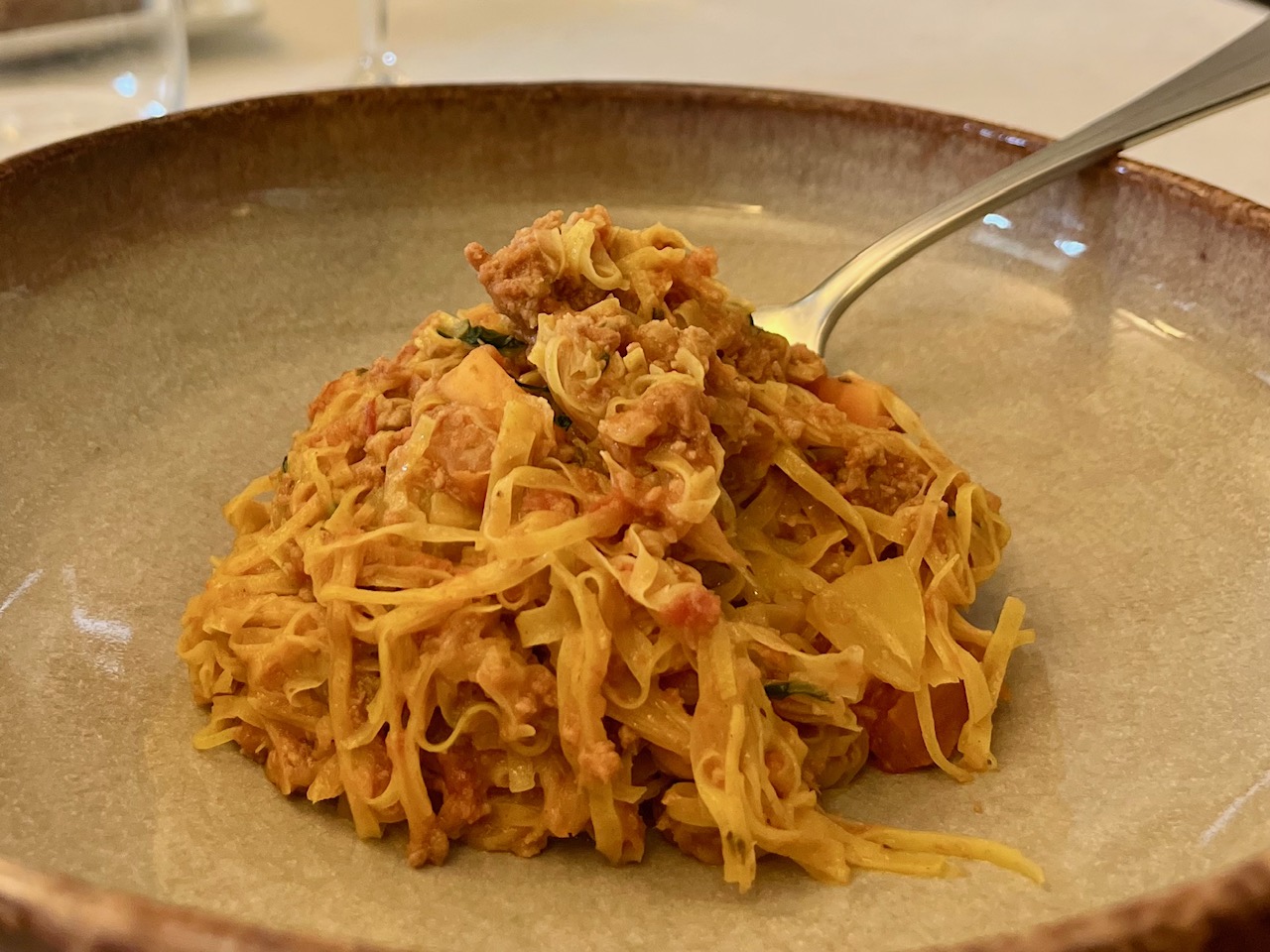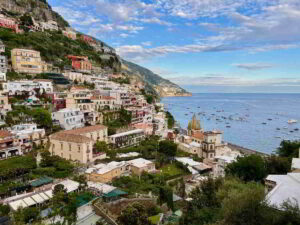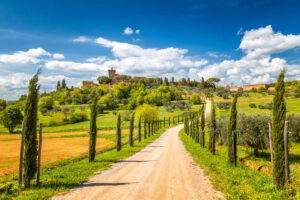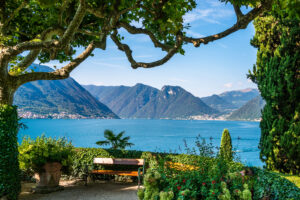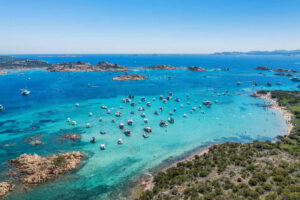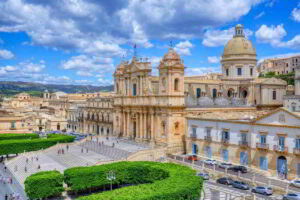Unveiling Italy’s Culture and Traditions Through the Best Pasta
Italy is a dream destination for many, and justifiably so. As you embark on our captivating small group tours of Italy, the rich tapestry of culture, art, and history unfolds around you, yet the soul of Italy is truly found in its cuisine.
The authentic Italian experience is embodied in its iconic pasta dishes, each telling a delectable story rooted in regional traditions and fresh ingredients. Picture yourself enjoying al dente spaghetti with a flavorful tomato sauce in a charming trattoria of Naples’s Spanish Quarters or savoring the thin noodles from Piedmont – aka tajarin – garnished with soul-warming Alba white truffles.
Whether you’re a culinary enthusiast or a first-time visitor, our small group tours promise to immerse you in Italy’s culture and traditions through engaging cooking classes. You’ll learn about ingredients and their combinations in homemade meals created with Michelin-star chefs, steering clear of the mediocre and clichéd options that locals would never choose, typically found in touristy eateries across the country.
Join us as we uncover the best pasta dishes and exceptional culinary delights while traveling from Piedmont to Sicily, from Tuscany to the Amalfi Coast, Sardinia or Puglia on our curated small group Italy tours.
Italy Tours Seen Through the Best Regional Pasta
As natives of Italy, we strive to celebrate our traditional cuisine by focusing on hyper-local food. During our Italy tours, we guide our guests through a culinary experience, allowing them to savor beloved Italian classics as well as dishes that might not fit their preconceived notion of “Italian food”.
Italian cuisine isn’t a single entity; instead, it consists of regional specialties with unique recipes and ingredients influenced by various cultures throughout history.
From timeless classics to innovative interpretations, Italy’s regional culinary diversity is boundless and travelers require guidance in where to eat the best pasta.
Pasta is a symbol of regional pride in Italy. Each region has its own distinctive pasta shapes and traditional recipes that reflect the local culture and ingredients. For example, the rich, egg-based pasta of Emilia-Romagna and Piedmont are a stark contrast to the dried, durum wheat pasta commonly found in Naples, Sicily and Puglia.
This regional diversity is always a main focus of our small group Italy tours because each of the twenty regions feels like a separate country where food, as well as dialect, and culture are unique. Learn more on our blog about Unveiling Italian Regions, Tours to a Different Italy.
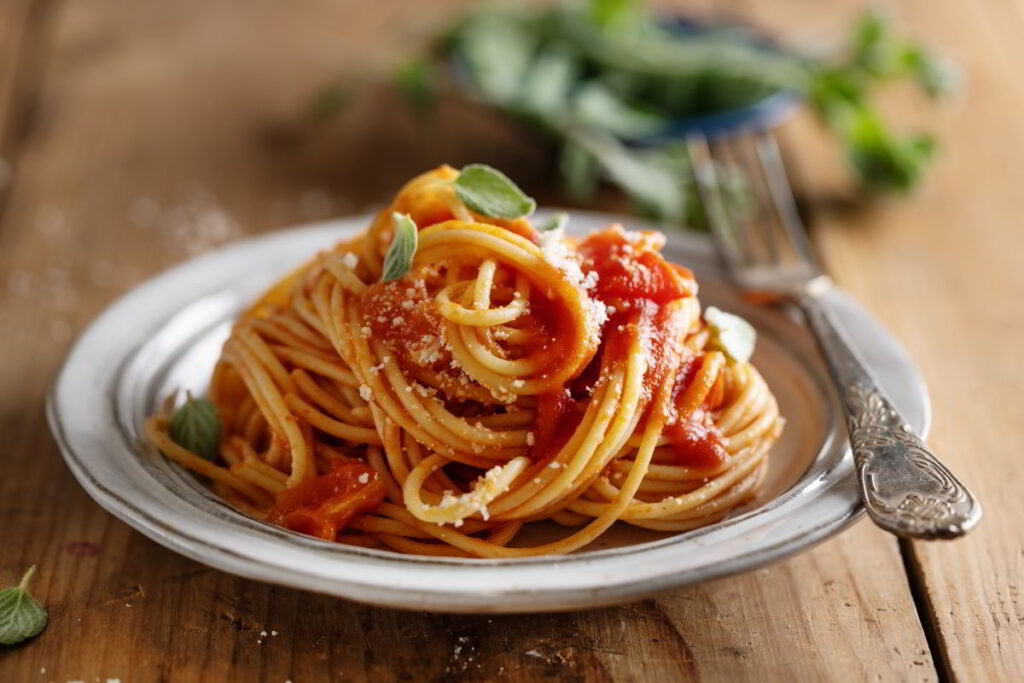
The History of Italy’s Pasta
Pasta is more than just a staple in Italian cuisine; it is a cultural emblem that embodies the essence of Italy. Its origins trace back to ancient times, with some theories suggesting that Marco Polo introduced pasta to Italy from China. However, many historians believe that pasta was a part of Italian culinary traditions long before that, with evidence pointing to the Etruscans and Romans.
In ancient Italy, a dish resembling pasta was consumed, but it vanished after the fall of the Roman Empire in the 5th century. The return of pasta came with Arab influence in Southern Italy, where it was created from hard wheat and water, rolled and cut into thin strips, then sun-dried.
Dried pasta proved to be an ideal food for storage, particularly beneficial for long journeys due to its low perishability and high nutritional value. Additionally, it has always been one of the most economical foods to produce, given the plentiful wheat in Southern Italy. Sicily was notably referred to by the Romans as the Empire’s granary, becoming a significant exporter of wheat across the Mediterranean coastline.
During the Middle Ages, merchants from Genoa began trading pasta in northern Italy, where it quickly became a delicacy among the wealthy.
For centuries following, especially through the late 1800s, pasta was enjoyed alongside bread by the upper classes. White flour was particularly costly, making both bread and pasta expensive as well. However, making pasta was a labor-intensive and time-consuming process, and in farming households, it was regarded as food for special occasions.
Egg Pasta: Where to Eat Tagliatelle in Italy
It remains unclear when and why someone in northern Italy chose to incorporate eggs into the dough that was already popular in Sicily. Regardless, this innovation enhanced the distinct flavor and facilitated the creation of thin sheets typical of pasta from Piedmont and Emilia, where it distinguished itself among all Italian dishes.
In these northern Italian regions, it became customary to refer to the string-cut pasta sheets as “tagliatelle, ” derived from the verb “tagliare,” meaning to cut. In Piedmont, the local dialect labels it “tajarin“, pronounced “ta-eea-reen”.
Chefs of the aristocracy observed that the egg-enriched, more elastic dough enabled them to fill it with stuffing without breaking. It could also be rolled thinner, allowing for shapes that would be impossible with standard pasta. The sheet of pasta must be thin enough for light to pass through; in Bologna, it is said that when held up to the sky, one should be able to see St. Luc appearing behind it, referencing the shrine of the local saint located on the hill beyond the city.
Where to Eat the Best Tajarin Pasta in Piedmont
Tajarin is a beloved egg noodle from the Piedmont region in Northern Italy. Recognized for its rich flavor and thin texture, it owes these qualities to the high quantity of egg yolks used in preparation. Its vibrant yellow hue and distinctive mouthfeel make tajarin a dish that’s typically enjoyed on its own, paired with truffles and parmesan, the rich sauce from slowly cooked braised beef, traditional Bolognese sauce, or simply with melted butter and sage.
When traveling on a small group tour to Northern Italy, tajarin promises an unforgettable Italian dining experience, and we are happy to suggest where to eat one of Italy’s best pasta dishes.
Piedmont’s thin noodles are often compared with the region’s famous hand-pinched ravioli called “plin” stuffed with a blend of three roasted meats. The best places in Piedmont to eat tajarin and plin ravioli are Alba and the nearby Barolo wine region, though they can also be found in Turin.
Alba White Truffle on Piedmont’s Tajarin Pasta
Tajarin can be enjoyed immediately after preparation or after a few days by allowing them to dry on the table, typically arranged in small nests. In either case, this very thin pasta requires just a minute or two in boiling water, and even if a cook becomes distracted, they will remain al dente due to the high egg content that imparts a distinctive texture.
A remarkable Italian experience awaits during a tour of Piedmont in the fall, coinciding with the white truffle season in Alba. Indulging in boiled tajarin topped with melted butter and generously shaved truffle offers an unforgettable culinary experience that is unparalleled globally.
Truffles pair beautifully with rich ingredients that enhance their aroma, making the pasta’s yolk and melted butter the ideal companions.

Italy Tours Cooking Classes: Making Tajarin Pasta
Italy tours are not only perfect for eating the best pasta but also for participating in engaging and enjoyable cooking classes. Our small group Italy tours to Piedmont feature hands-on cooking classes where local hosts share best practices and secrets to make one of the best pasta of Italy.
To create traditional tajarin, you’ll need between 30 and 40 egg yolks per kilogram of flour, depending on their size. The recipe is simple: just egg yolks, white flour, and a pinch of salt- no additional ingredients required.
Anyone familiar with pasta-making knows the challenge of working with such a dough that is rich in egg yolks. It demands considerable upper body strength to mix and even more to roll it thin, just like grandma did. While modern machines can assist with mixing and rolling, cutting the pasta into angel hair-like strands, about 2 to 3 millimeters wide, should ideally be done by hand using a large knife.
Regardless of whether the cutting is done by hand or with a machine, the differences are evident: hand-cut tajarin tends to be imperfect, with some strands slightly thicker than others. This varied appearance on your plate evokes nostalgic memories of Italian families preparing pasta together for special occasions.
Cooking Classes: Learn to Make Authentic Pasta on Italy Tours
One of the best ways to immerse yourself in Italy’s culinary traditions is by taking a cooking class. These hands-on experiences featured on our small group Italy tours offer the opportunity to learn from local chefs and home cooks, who will share their secrets for making authentic pasta dishes. Whether you are a novice cook or an experienced chef, there is something for everyone to learn and enjoy on our small group tours to Italy.
In Sicily we witness the art of making couscous from a local lady who doesn’t speak English but say it all with the wise hand gestures that quickly work the semolina flour. Although couscous cannot be considered a kind of pasta, it is made with the same ingredients and on Favignana island, as well on Western Sicily it is served as a first course.
The cooking class we take in Lucca is centered around iconic Italian dishes and regional Tuscan dishes. Pasta around Lucca is often served with the fresh ingredients and delicious cheeses of the nearby Garfagnana valley known for pulse, vegetables, mushrooms and much else.
In Puglia, our host in a traditional masseria teaches us to knead the ear-shaped orecchiette pasta after foraging seasonal herbs and produce from the masseria’s garden.
One of the most scenic cooking classes of our small group Italy tours, though, takes place on an open air terrace on the rocky slopes near Positano. A breathtaking venue framed by the blue water of the Mediterranean and the white limestone rocks, lemon and olive groves where guests learn to make scialatielli pasta, simple but tasteful sauces with the organic harvest of the Amalfi Coast.
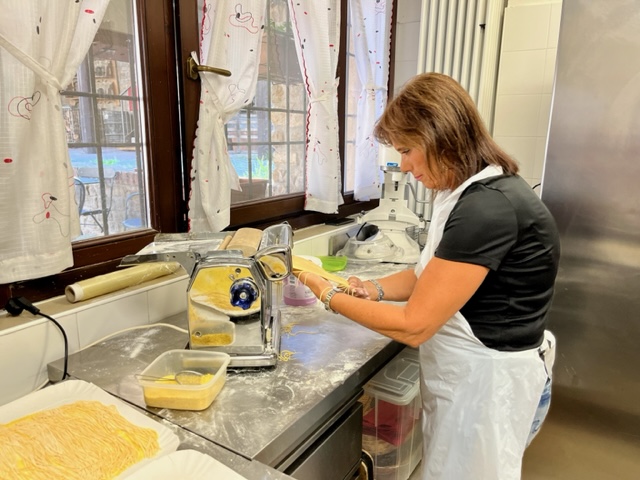
Italy Tours Through Popular Pasta Types
Italy’s pasta repertoire is vast and varied, with each type of pasta offering its own unique texture and flavor.
Spaghetti, the most famous pasta in Italy, stretches from north to south. This dry pasta, made from durum wheat semolina, is readily available in grocery stores. Italians enjoy spaghetti with various sauces, such as butter and Parmesan cheese for a quick meal when the fridge is bare, or the classic tomato sauce and pesto.
Spaghetti alla Carbonara is a Roman classic that has captured the hearts of pasta lovers worldwide. This dish features spaghetti tossed in a creamy sauce made from eggs, Pecorino Romano cheese, guanciale (cured pork cheek), and black pepper. The key to a perfect carbonara lies in the technique; the heat of the freshly cooked pasta gently cooks the eggs, creating a silky, luxurious sauce without scrambling them. The result is a rich, savory dish that is both comforting and indulgent.
Other types of dry pasta include penne—a tube-like shape with a diagonal cut—farfalle, also known as “bow-tie” pasta, rigatoni, with its large, ridged tubes, and fusilli, which are spiral or corkscrew-shaped.
Best Pasta in Florence and Tuscany
A classic on a Tuscany tour are fettuccine, flat, ribbon-like egg noodles slightly thinner compared to pappardelle. Both pair beautifully with wild boar meat sauce. Pappardelle al Cinghiale is a Tuscan specialty that showcases the region’s love for game meat. This dish features wide, flat pappardelle pasta coated in a rich, slow-cooked sauce made from wild boar, red wine, tomatoes, and aromatic herbs. The robust flavors of the cinghiale (wild boar) pair perfectly with the hearty pappardelle, creating a comforting and satisfying meal. This rustic dish is a true reflection of Tuscany’s culinary traditions.
Pici, a thick, hand-rolled pasta from Tuscany, specifically from Siena, is often paired with rich, meaty sauces or with aglione, a sweet springtime type of garlic used to flavor a thick tomato sauce. In central Italy, the cuisine is characterized by its simplicity and reliance on high-quality ingredients.
Best Pasta Recipes on Italy Tours, from Sicily to Liguria
Native of Puglia but nowadays found all over Italy, orecchiette, which translates to “little ears” are traditionally served with broccoli sauté with a hint of salted anchovies and garlic.
The Liguria region, from the French border to Portofino, Santa Margherita Ligure, and Cinque Terre, is known for trofie, a short, twisted pasta traditionally served with pesto. This twisted pasta is the perfect vehicle for the vibrant green sauce made from fresh basil, garlic, pine nuts, Parmigiano-Reggiano, Pecorino Romano, and extra virgin olive oil. The dish is often garnished with boiled potatoes and green beans, adding an extra layer of texture and flavor. This bright and aromatic dish is a celebration of Liguria’s bountiful produce.
Sardinia boasts its own unique pasta shape called fregola, which consists of small, toasted balls of pasta that are typically served in soups or seafood dishes. Scialatielli from Sorrento and the Amalfi Coast, often served with seafood, behold a chewy texture, in contrast with Western Sicily’s busiate, a corkscrew-shaped pasta eaten around Trapani with a variation of pesto made with almonds, sun-dried tomatoes, herbs and ricotta cheese.
In Sicily, pasta con le sarde reflects the influence of Arab cuisine, featuring a mixture of sweet dried raisins, sardines, wild fennel, bread crumbs, and sometimes, depending on the chef, a splash of tomato sauce.
Pasta alla Norma is a Sicilian classic that celebrates the island’s vibrant flavors. This dish features pasta (often rigatoni or spaghetti) tossed in a rich tomato sauce with fried eggplant, ricotta salata cheese, and fresh basil. The sweetness of the tomatoes and the creaminess of the ricotta salata perfectly complement the savory eggplant, creating a harmonious and flavorful dish. This iconic Sicilian dish is a tribute to the island’s rich culinary heritage.
Lastly, Calabria is known for its spicy nduja sausage, often used in pasta sauces. Each region’s pasta dishes tell a story of the land and its people, making the exploration of Italy’s culinary landscape a truly enriching experience.
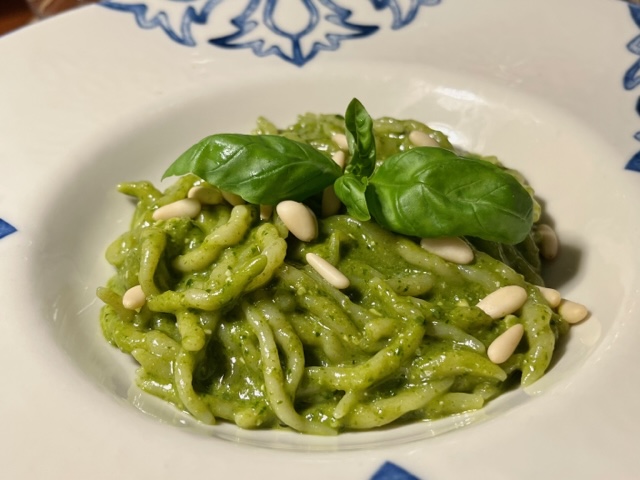
Understanding the Role of Pasta in Italian Cuisine
Regardless of its origins, pasta has evolved into an indispensable element of Italian identity, celebrated for its versatility and ability to bring people together around the dining table.
In Italy, pasta is a way of life. It is enjoyed in a myriad of forms, from simple weeknight dinners to elaborate feasts. The preparation of pasta is an art that has been perfected over centuries, with each region boasting its own unique methods and ingredients. The beauty of pasta lies in its simplicity; a handful of basic ingredients can be transformed into a comforting and satisfying meal. This simplicity, coupled with the use of fresh, high-quality ingredients, is what makes Italian pasta dishes so universally adored.
Pairing Wine with Italian Pasta
Pairing wine with pasta is an art that can elevate your dining experience to new heights. Italy’s diverse wine regions offer a wealth of options, each with its own unique characteristics that complement various pasta dishes. The key to a successful pairing is to match the intensity and flavor profile of the wine with the ingredients and sauce of the pasta dish.
For tomato-based sauces, such as those found in dishes like Sicily’s spaghetti alla puttanesca or pasta alla Norma, a medium-bodied red wine with good acidity, such as Nero d’Avola, is an excellent choice. These wines have enough structure to stand up to the acidity of the tomatoes without overpowering the dish. For cream-based sauces, like Piedmont’s melted butter and truffles a fresh, full-bodied wine, such as Barbera d’Asti or tannic Nebbiolo, washes the fat from the mouth and set the palate ready for the next bite.
Seafood pasta dishes, such as Positano’s spaghetti alle vongole, or Portofino’s seafood linguine are best paired with crisp, refreshing white wines that complement the delicate flavors of the sea. Vermentino, Chardonnay or even Piedmon’t indigenous Arneis are all excellent choices for these types of dishes. For heartier, meat-based pasta dishes, such as tagliatelle al ragù Bolognese or pappardelle al cinghiale, a bold red wine with ample tannins, such as Tuscany’s Chianti Classico or Brunello di Montalcino, provides a perfect balance.

